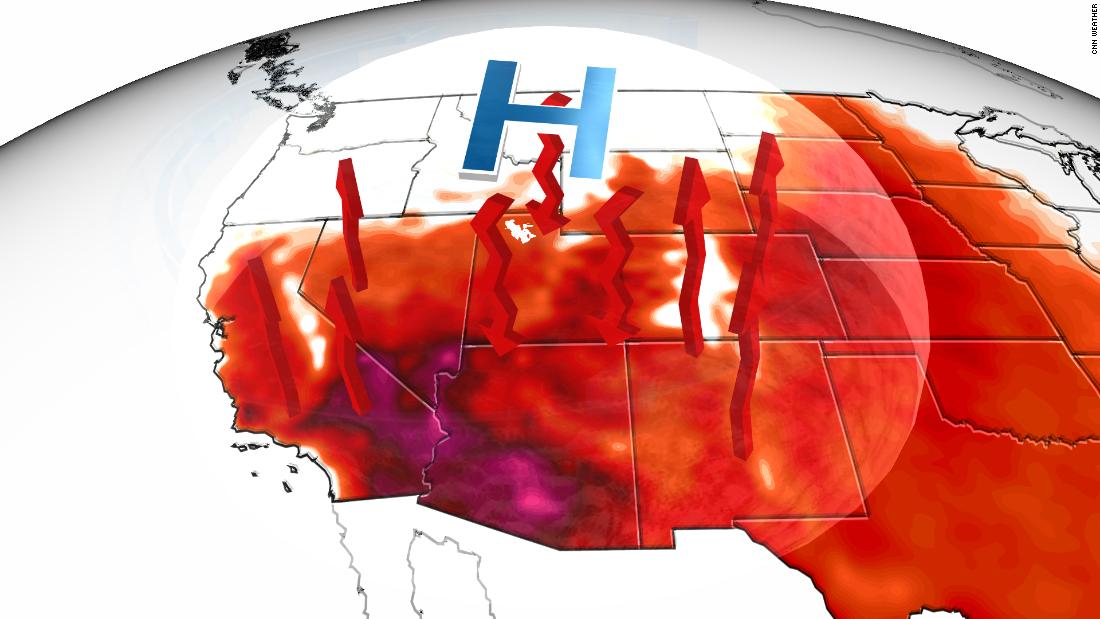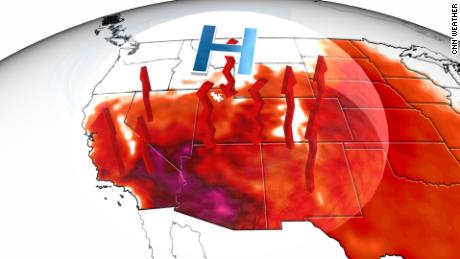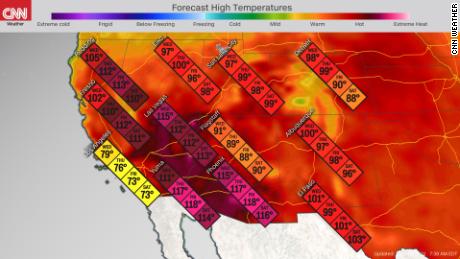More than 40 million Americans are on alert as the National Weather Service warns that high temperatures could last for a long time
For some perspective, records in Salt Lake City date back to 1874. In that time, there have been over 50,000 calendar days of temperatures observed. Tuesday marks only the third time the city has ever soared to 107 degrees, roughly a 1 in 50 year event.
This ridge is also responsible for the unrelenting drought, as it directs rain away from the region.
“The hotter it gets, the stronger the ridge,” said Hayhoe. “So while climate change may not be responsible for the ridge forming, it can make it last longer and be stronger than it would be otherwise, which makes the drought more intense and longer.”
Amid a historic drought and the lowest water level on record in nearby Lake Mead, the state of Nevada will also be challenging its all-time record high this week, currently held by the town of Laughlin, which reached 125 degrees on June 29, 1994. Highs in Laughlin are forecast to be between 120 and 122 from Wednesday to Sunday; the average this time of year is 106 degrees.
Widespread triple-digit records are being observed as far north as Idaho and Montana.
As the week progresses, so does the long duration heat wave.
More records in jeopardy
On Wednesday afternoon, the city of Las Vegas will be knocking on the doorsteps of history as highs are forecast to reach 116 degrees, just 1 degree shy of the city’s all-time record of 117 degrees. That’s benchmark that has only been achieved four times since records began in 1937.
Not too far away in Phoenix, where residents are well accustomed to oppressive heat, the mercury is forecast to impress even by Phoenician standards. Highs this time of year typically settle in around 105 degrees. The average first 115-degree day generally arrives during the first week of July. However, with summer officially four days away, high temperatures in Phoenix soared to a record of 115 degrees on Tuesday.
In fact, forecast models indicate that they may reach or exceed 115 degrees every day from Wednesday through Friday. This would tie the all-time record for most consecutive 115 degree days in Phoenix at four days. Perhaps not surprisingly, in the summer of 2020, the city reached 115 degrees on four successive days on two separate occasions.
In the US, five of the 10 hottest years on record have all occurred since 2012, and the broader trend signals little change.
There have always been heat waves but they are getting worse
There have always been heat waves, droughts, wildfires and more, well before humans started changing climate. What scientists are increasingly beginning to say, explains Hayhoe, is how much worse climate change is making these events.
“Scientists are starting to be able to say ‘a lot!’ and even to answer this question with numbers for specific events,” she said.
“For example, scientists have found that climate change made the 2019 European heatwave 10 times more likely, and the Siberian heatwave of June 2020 600 times more likely.”
In the future, heat waves and drought will likely worsen, Hayhoe said. Particularly in areas already naturally at risk from drought.
Ironically, climate change will also make heavy rain events more frequent. “Which isn’t good news either,” explains Hayhoe. “It can be damaging, and it makes it hard to replenish soil water and groundwater depleted during a drought when rain falls in heavy downpours as most of it just runs off.”
The future looks different than the records of the past.
“We can no longer rely on the past as a reliable predictor for future conditions, as we’ve been doing for hundreds and even thousands of years,” Hayhoe said. “Instead, we must prepare for conditions that are hotter and droughts that are more damaging than we’ve seen before.”
![]()








